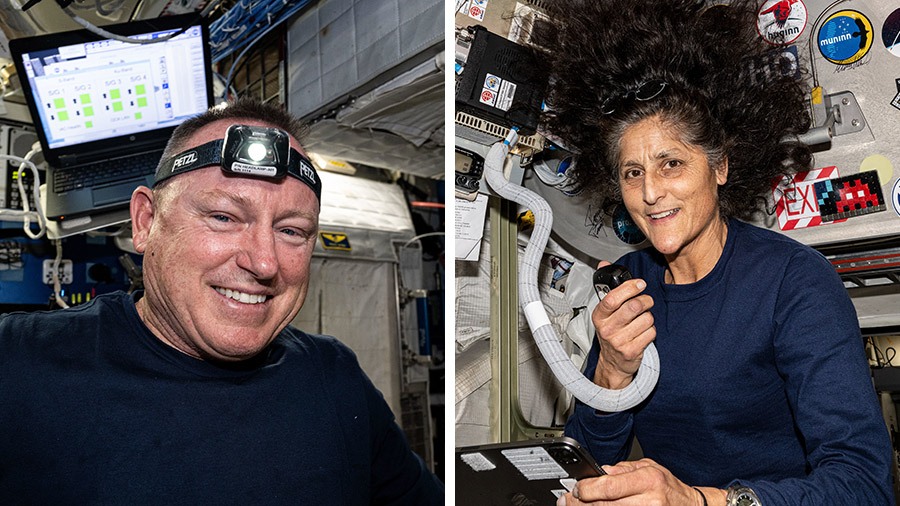
Space botany, lunar construction, and science maintenance were the top research tasks at the beginning of the week for the orbital residents living and working aboard the International Space Station.
Expedition 71 Flight Engineer Jeanette Epps of NASA spent all day Monday carefully treating thale cress plant samples growing inside the Plant Experiment Unit. The botany research device located in the Kibo laboratory module’s Cell Biology Experiment Facility housed the growing plants for 10 days before Epps picked the samples with forceps, washed them in a specialized saline solution, then exposed them to high ultraviolet light for one hour. She is helping researchers understand how plants grow in the radiation and microgravity environment to inform space agriculture techniques for missions to the Moon, Mars, and beyond.
Scientists are also exploring ways to build crew habitats on lunar and planetary surfaces without launching supplies on fuel-consuming cargo missions from Earth. NASA Flight Engineer Matthew Dominick mixed and prepared small bags of simulated lunar cement on Monday for a 24-hour incubation period inside a thermos can. Afterward, the samples will be stowed for several more weeks of hardening at ambient temperatures on the orbital outpost. The space-created cement samples will be returned to Earth for scientists to analyze their microstructure and mechanical strength.
NASA astronauts Tracy C. Dyson and Mike Barratt worked throughout Monday servicing a variety of research hardware ensuring ongoing space science operations produce high-quality results. Dyson worked in the Columbus laboratory module during Monday troubleshooting components on the MARES exercise rack, also known as the Muscle Atrophy Research and Exercise System. MARES enables scientists to gain detailed insights on the effects of weightlessness on an astronaut’s musculoskeletal system. Barratt swapped sample cartridges inside the Materials Science Laboratory, a research furnace facilitating discoveries of new and improved materials as well as new uses for existing materials such as metals, alloys, polymers, and more.
NASA astronaut and Boeing Starliner Pilot Suni Williams assisted Dyson with the MARES troubleshooting work throughout Monday. Afterward, she and Starliner Commander Butch Wilmore from NASA called down to Boeing flight controllers for an hourlong crew conference. Earlier, Wilmore was on life support duty transferring and draining fluids from resupply tanks as well as collecting water samples for microbial analysis.
Cosmonauts Oleg Kononenko and Nikolai Chub have begun unpacking some of the nearly three tons of food, fuel, and supplies that arrived aboard the Progress 89 cargo craft at 1:53 a.m. EDT on Saturday. The duo was on duty early Saturday monitoring Progress during its automated docking to the Zvezda service module’s aft port for six months of cargo activities. Flight Engineer Alexander Grebenkin updated operations documents for the orbiting lab’s Roscosmos segment. He also joined Dominick, Barratt, and Epps and trained for emergency scenarios and an upcoming crew departure aboard the SpaceX Dragon Endeavour spacecraft.
Learn more about station activities by following the space station blog, @space_station and @ISS_Research on X, as well as the ISS Facebook and ISS Instagram accounts.
Get weekly video highlights at: https://roundupreads.jsc.nasa.gov/videoupdate/
Get the latest from NASA delivered every week. Subscribe here: www.nasa.gov/subscribe









